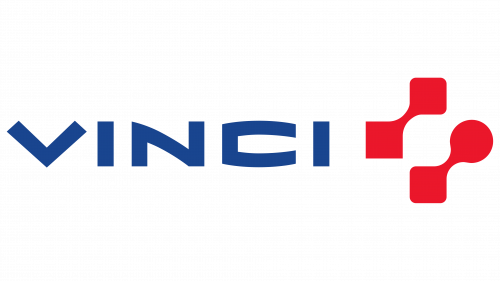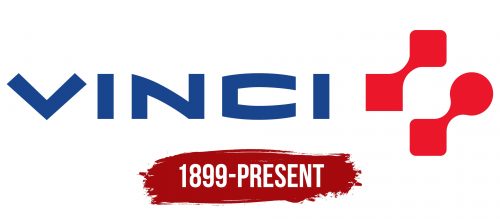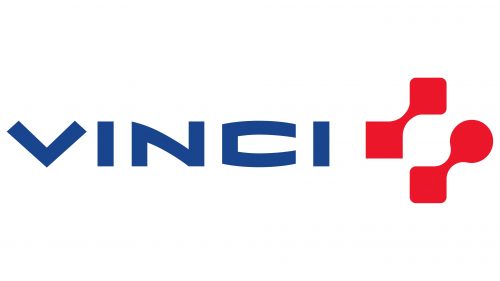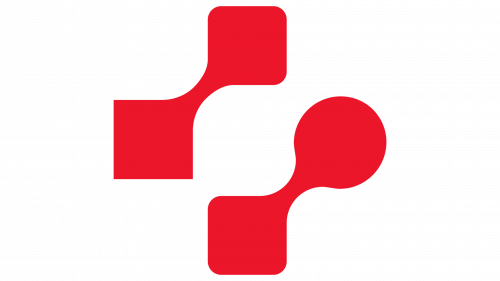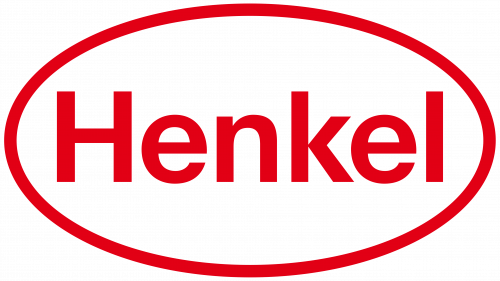The Vinci logo conveys the essence of construction as the embodiment of the divine plan for organizing the earth. The emblem represents the sacred meaning of ordinary things, which no person can do without because they reflect humanity’s most important material value—home.
Vinci: Brand overview
Vinci’s history began with the founding of Société Générale d’Entreprises (SGE) in 1899 by two French engineers, Alexandre Giros and Louis Loucheur. This business, which specialized in building and electrical work, eventually formed the forerunner of contemporary Vinci.
The enterprise actively participated in significant infrastructure projects in France and its colonies throughout the first few decades of the 1900s. The company established its reputation in the construction industry by building important structures such as railroads and power plants.
The organization was instrumental in reconstructing France’s infrastructure after World War II. The business increased its operations in the 1960s and 1970s, participating in the building of nuclear power stations and other significant industrial projects.
The enterprise started a diversification process in the 1980s by acquiring businesses in the infrastructure and construction industries. Among these was the 1986 acquisition of Sogea, which greatly improved the business’s standing in the civil engineering sector.
The 1990s were a time of major transition for the firm. In 1988, Compagnie Générale des Eaux, which subsequently changed its name to Vivendi, purchased a majority share in the company. However, the firm did regain its independence in 2000.
A significant turning point in the company’s history occurred in 2000. All of SGE’s subsidiaries were merged under the Vinci brand. The name “Vinci” was selected as a tribute to Leonardo da Vinci, representing creativity and superior engineering.
In 2001, the enterprise became the largest construction business in the world when it made a significant acquisition of the GTM Group. This transaction greatly increased its global reach and reinforced its standing in the construction and concession industries.
ASF Group, the largest highway operator in France, was acquired in 2006. This transaction strengthened the company’s standing in the concessions and infrastructure industries.
In 2010, the firm increased its market share in the aviation industry by acquiring Cegelec, a mechanical and electrical engineering service provider.
2011 saw the organization expand significantly on a global scale. The business strengthened its position in the international market by acquiring Soletanche Bachy, a pioneer in foundation works.
In 2013, the firm made a significant acquisition in the energy industry when it acquired the Portuguese airport management business ANA. This acquisition greatly increased the concession assets in its portfolio.
2014, the business expanded its renewable energy operations and bought out the world-renowned pre-stressed construction manufacturer Freyssinet.
In 2016, the company bolstered its position in the airport concessions industry by purchasing airports in Lyon and interests in airports in Japan.
2018 saw substantial growth in the robotics and energy industries. The organization strengthened its foothold in both markets by acquiring PrimeLine Utility Services in the USA and Eitech in Sweden.
The firm made a huge acquisition in 2019 when it paid £3.22 billion to acquire a majority interest in London’s Gatwick Airport. With this acquisition, the organization was able to fortify its position in the global market and increase its footprint in the airport management industry. The second-biggest airport in the United Kingdom, Gatwick, significantly enhanced the value of Vinci Airports’ holdings.
The enterprise finished several significant infrastructure projects in 2020. Among the most noteworthy was the debut of a new French high-speed rail network segment linking Toulouse and Bordeaux. This project showcased the company’s proficiency in building railroads and reaffirmed its significance in advancing Europe’s transportation network.
By paying €4.9 billion to acquire the energy sector of the Spanish construction company ACS in 2021, the firm proceeded with its objective of diversification and expansion. Through this agreement, the company was able to grow its market share in North and South America and solidify its position in the renewable energy industry.
In 2022, the organization concentrated on sustainability. The business unveiled a comprehensive plan to cut carbon emissions and become carbon neutral by 2050.
In 2023, the firm strengthened its position in the digital infrastructure and building industry. The business invested in creating cutting-edge smart city solutions, such as energy-efficient building technology and traffic control systems.
In 2024, the company saw substantial growth in the Asia-Pacific region. By securing multiple significant contracts for infrastructure projects in Australia and Singapore, the enterprise strengthened its position in the rapidly expanding markets in the area. These initiatives included updating the airport’s infrastructure and building additional metro lines.
Meaning and History
What is Vinci?
It is a large French multinational corporation operating in the construction, engineering, and concessions sectors. The company is known for its involvement in various infrastructure projects, including building and civil engineering, energy infrastructure, and transportation systems. It operates through several subsidiaries specializing in construction, road works, and energy services. Under long-term concession agreements, the company manages and operates infrastructure assets such as highways, airports, and railroads. The brand is known for its experience in implementing large-scale projects.
1899 – today
This emblem is a modern interpretation of the most ancient values, conveying the divine origin of the craft of building. It symbolizes the connection between the celestial and the earthly—a sacred stone once placed at the foundation of temples and cathedrals to lift their towering domes toward the sky. Simple elements express the complex concept of the company: the spiritual is embodied in the material, the heavenly in the earthly, and the spherical in the cubic. This is why many squares are depicted in the logo: on an abstract level, they symbolize divine presence.
Even though Vinci’s visual identity is based on a religious-philosophical aspect, it has a familiar configuration that includes:
- a wordmark;
- a graphic element.
The text conveys the brand name. It is set in a geometric font, where the letters resemble construction parts: both “I” s look like vertically standing bricks, the “V” has the shape of an aluminum corner for slopes, and the “N” looks like the symbol for an entrance in a building plan. The letters have sharp angles and perfectly straight edges. Each letter is unique and has no counterparts. Overall, the glyphs resemble elements of a building plan, confirming the connection to construction.
To the right of the inscription are two intriguing symbols formed from two tiny parts connected by a thin line. These contain the emblem’s key idea: they are the divine building elements from which the universe is made. The cubes represent sacred stones and symbolize the earth, while the sphere conveys the infinite sky. Two small squares with rounded corners are drawn in the upper fragment. Below, a square and a circle are depicted.
Upon closer inspection, the emblem reflects the stages of the cube’s transformation into a sphere. To ensure these details catch the eye immediately, the designers colored them red—a color representing active action, leadership, and the peak of emotional expression. The bright palette is well balanced by a deep shade of blue, which adds balance to the logo and tones down the theme of aggression.
This visual identity symbolically connects to the industry in which the construction company operates and highlights the brand’s ancient heritage, which dates back to the 19th century. At the same time, it conveys modern technology and signifies the reliable construction of homes for the long term.
